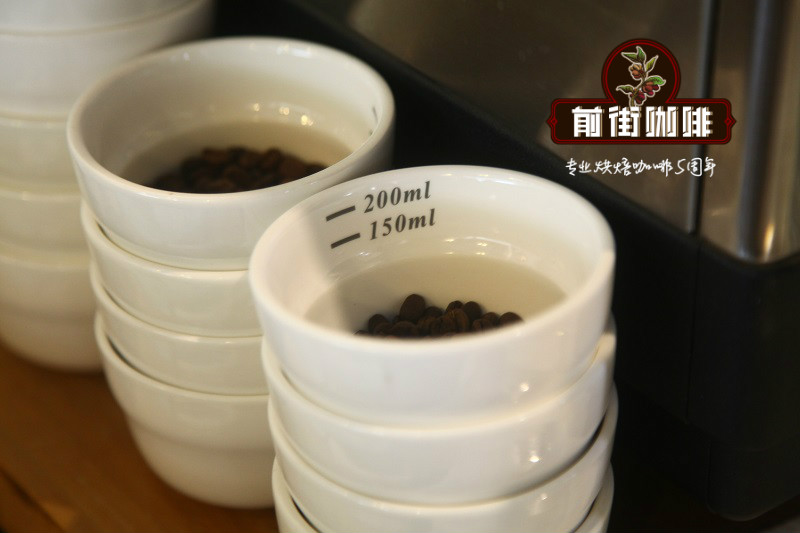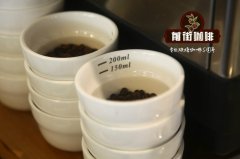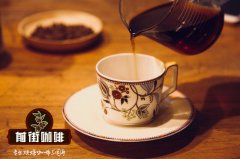Kafa Forest, Ethiopia | Wind of native species of Agaro Agaro G1 Bitugudina

Professional coffee knowledge exchange More coffee bean information Please pay attention to coffee workshop (Weixin Official Accounts cafe_style)
Kafa Forest, Ethiopia| Washed Agaro G1 Flavor of native species than Tugudina?
Ethiopia's coffee flavor is very diverse, different soil types, microclimate and countless native coffee species, resulting in each town produced coffee has obvious differences and characteristics. In 2010-2012, it has continuously obtained high scores from 92 to 94 in the American authoritative coffee review, which shows the extraordinary value of raw beans in this region! High mountains, highlands, plateaus, valleys and plains crisscross the territory, and the terrain is diverse. The geology of this area is rich in nutrients and well drained volcanic soil. The soil depth is nearly two meters, and the surface soil is dark brown or brown. The greatest advantage of the site is that soil fertility is maintained through the circulation of natural organic matter, using withered leaves or dead leaves of surrounding trees and plant residues as natural fertilizers.
The coffee is made up of microbatches of 600 small coffee farmers, grown in semi-wild or wild forests, traditionally organic farming methods, although the washing plant is not officially certified organic.
In the past, when we mentioned Ethiopia's famous producing areas, we would associate them with Yega Shefi or Sidama, but new essential coffee producing areas have emerged one after another, and the quality is extremely good. Aglu is one of them. Aglu is in the extreme west of Ethiopia and is quite high above sea level, with some coffee plantations even exceeding 2100 meters.
Biftu Gudina (or Bifdu Gudina) is a newly formed cooperative in Agru region, Biftu Gudina means "development line" in Amharic language, founded in 2012, belonging to Agaro-Goma in Jimma region. High altitude, beautiful environment, lush forests, lush, was originally established through the assistance of Technoserve international organization, currently has 130 members. What is rare is that the products of the cooperative have been praised by world-famous bean baking masters from the beginning, and they are considered to be full of potential and can compete with Yega Shefi.
Bitu Gudina uses washing to treat coffee. The washing machine used is Penagos ecological peeling machine. After peeling and pulp, it is soaked in cement tank water for fermentation for 24-36 hours. Then it is divided into two stages through running water ditch, pectin is removed, and it is soaked in clean water again for 12-24 hours. It is dried in sunlight for 10-15 days on elevated shed, during which it is manually stirred and screened.
It is difficult to know exactly what the variety is, but it should include the Ethiopian native species numbered 1274. In addition to Ethiopian classic floral and fruity, it also shows unique arugula flavor, bright acid, floral, complex, with spicy flavor.
Origin: Agaro; Kaffa Kaffa
Cooperative: Biftu Gudina Co-op
Ethiopian Heirloom Varieties
Altitude: 1950-2150 m
Treatment: washed
Since the opening of the ECX in 2009, the current practice is to classify the more well-known Yirgacheffe regions, including Yirgacheffe, Wenago, Kochere, Gelena Abaya, etc., into A/B categories of "classic Yirgacheffe" and "no classic Yirgacheffe". Yes is A, no is B. At present, the green bean merchants who import Yerga Sherffy coffee beans in Taiwan do not actually classify them in this way. If you see this classification that day and want to try the so-called classic yejia sherry flavor, remember to choose A.
A, B classification ≠ coffee bean quality is good or bad
So, without the classic yea jaffe flavor, is that bad beans? No, the beans themselves are graded good or bad, and ECX has further classification methods. It is not the "yega-shefi g1" or "yega-shefi g2" you are familiar with. Fresh coffee beans harvested in that year must be graded initially, and coffee beans with g1- g3 ratings will be further graded into Q1 and Q2 by SCAA cup.
Q1 Highest grade: Coffee beans with a score of g1 or g2 above 80 in the primary grade + a score of 85 or above in the fine grade. The highest grade coffee beans.
Q2 Highest grade: G1 or G2 grade coffee beans in the beginner grade +80--84.75 grade coffee beans in the boutique grade. It is the second highest grade coffee bean.
- Q1 is the highest level, Q2 is the second
- Common in Taiwan, only g1-- g4 classification → Whether washed or sun beans, choose g1 should be able to get less blemish rate and delicious coffee beans.
Flavor description:
Fresh floral aromas and citrus dry fruit aromas, citrus, orange juice, lemon peel and white grape with floral aromas, bergamot and black tea aftertaste, full flavor and texture.
Front Street Recommended Brewing:
Filter cup: Hario V60
Water temperature: 90 degrees
Abrasion: Small Fuji Abrasion 3.5
Cooking method: water-powder ratio 1:15, 15g powder, first injection of 25g water, stewing for 25s, second injection to 120g water, water cut off, wait for the powder bed water to drop to half, then inject water slowly until 225g water, extraction time about 2:00
Analysis: Three-stage brewing, clear coffee before, during and after the flavor. Because V60 has many ribs, the drainage speed is faster, and the extraction time can be prolonged when the water is cut off.
Important Notice :
前街咖啡 FrontStreet Coffee has moved to new addredd:
FrontStreet Coffee Address: 315,Donghua East Road,GuangZhou
Tel:020 38364473
- Prev

Panamanian Poquet producing area | Emerald Manor | High altitude privately collected version of washed Geisha | Special Purple Mark approaching
Professional coffee knowledge exchange more coffee bean information please follow the coffee workshop (Wechat official account cafe_style) Panama Poquet producing area | Emerald Manor | High altitude private version of washed geisha | Special Purple bid approaching the flavor of the bidding? This batch is a privately collected purple standard version, which is higher than the green standard. Under the delicate adjustment of the convex nose, we finally stably find the best baking point and introduce it to us.
- Next

The western valley of Costa Rica? the flavor of Kaduai red honey treatment at the Hills of St. Louis?
Professional coffee knowledge exchange more coffee bean information please follow the coffee workshop (Wechat official account cafe_style) Costa Rica western valley | St. Louis Hill Manor Kaduai red honey treated flavor? The seven main coffee producing areas in Costa Rica are distributed along the inland central plateau from northwest to southeast. The Costa Rican volcanic terrain is rich in volcanic ash, mild and suitable.
Related
- Detailed explanation of Jadeite planting Land in Panamanian Jadeite Manor introduction to the grading system of Jadeite competitive bidding, Red bid, Green bid and Rose Summer
- Story of Coffee planting in Brenka region of Costa Rica Stonehenge Manor anaerobic heavy honey treatment of flavor mouth
- What's on the barrel of Blue Mountain Coffee beans?
- Can American coffee also pull flowers? How to use hot American style to pull out a good-looking pattern?
- Can you make a cold extract with coffee beans? What is the right proportion for cold-extracted coffee formula?
- Indonesian PWN Gold Mandrine Coffee Origin Features Flavor How to Chong? Mandolin coffee is American.
- A brief introduction to the flavor characteristics of Brazilian yellow bourbon coffee beans
- What is the effect of different water quality on the flavor of cold-extracted coffee? What kind of water is best for brewing coffee?
- Why do you think of Rose Summer whenever you mention Panamanian coffee?
- Introduction to the characteristics of authentic blue mountain coffee bean producing areas? What is the CIB Coffee Authority in Jamaica?

